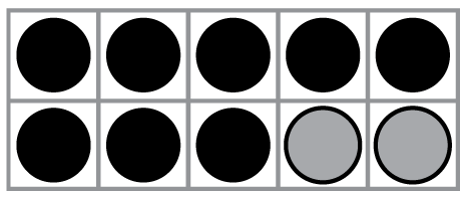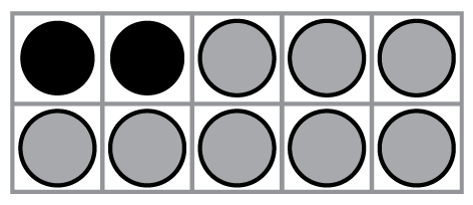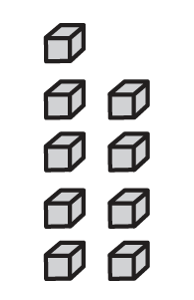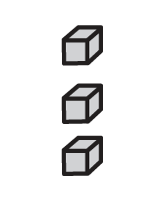Study Guide
Field 133: School Psychologist
Sample Constructed-Response Assignment
Recommendation for individuals using a screenreader: please set your punctuation settings to "most."
The following materials contain:
- Test directions for the constructed-response assignment
- A sample constructed-response assignment
- An example of a strong and weak response to the assignment, and a rationale for each
- The performance characteristics and scoring scale
Test Directions for the Constructed-Response Assignment
This section of the test consists of one constructed-response assignment. You are to prepare a written response of approximately 300 to 600 words on the assigned topic. You should use your time to plan, write, review, and edit your response to the assignment.
Read the assignment carefully before you begin to write. Think about how you will organize your response.
As a whole, your response must demonstrate an understanding of the knowledge and skills of the field. In your response to the assignment, you are expected to demonstrate the depth of your understanding of the content area through your ability to apply your knowledge and skills rather than merely to recite factual information.
Your response to the assignment will be evaluated on the basis of the following criteria:
start bold PURPOSE: end bold the extent to which the response achieves the purpose of the assignment
start bold SUBJECT MATTER KNOWLEDGE: end bold accuracy and appropriateness in the application of subject matter knowledge
start bold SUPPORT: end bold quality and relevance of supporting details
start bold RATIONALE: end bold soundness of argument and degree of understanding of the subject matterThe constructed-response assignment is intended to assess subject matter knowledge and skills, not writing ability. However, your response must be communicated clearly enough to permit valid judgment of the scoring criteria. Your response should be written for an audience of educators in this field. The final version of your response should conform to the conventions of edited American English. Your written response must be your original work, written in your own words, and not copied or paraphrased from some other work.
Be sure to write about the assigned topic. You may not use any reference materials during the test. Remember to review what you have written and make any changes you think will improve your response.
Sample Constructed-Response Assignment
Competency 0011
Synthesize data and other relevant information to identify a student's area of need and design an asset-based, multicultural approach to meeting the student's need.
start bold Use the information provided to complete the task that follows. end bold
Write an essay of approximately 300 to 600 words in which you analyze information from the student's assessment data and instructional program. In your essay:
- identify one area of need demonstrated by the student and describe how the student's need is likely to influence their development, learning, or academic performance.
- identify one intervention approach or strategy as part of an intervention plan to address the student's need and explain why the intervention approach or strategy you identified would address the student's need.
- explain how you would evaluate the effectiveness of the intervention approach or strategy.
- identify one area of strength and describe how you would build on this strength to promote the student's development, learning, or academic performance.
- describe a strategy for collaborating with parents or guardians to develop an intervention plan that effectively addresses the student's need.
Exhibit 1: Profile
Vincent is a nine-year-old third-grade student who was referred for a multidisciplinary team evaluation for a suspected specific learning disability in mathematics. Vincent made limited progress when given Tier 2 interventions and presents with significantly below-grade-level academic abilities. The multidisciplinary team plans to review Vincent's comprehensive assessment data to develop an Individualized Education Program (I E P) that addresses his learning strengths and needs. In preparation for this team meeting, the school psychologist reviews Vincent's assessment data.
Exhibit 2: Assessment Data
The assessment data below are an excerpt of Vincent's psychoeducational evaluation.
Woodcock-Johnson® 4 Tests of Cognitive Abilities (W J 4 trademark C O G)
Mean = 100, Standard Deviation = 15
Table depicting a student's cognitive ability test results Subtest Standard Score Percentile Rank Qualitative Description Oral Vocabulary 90 25 Average General Information 92 30 Average Number Series 85 16 Low Average Concept Formation 89 23 Low Average Verbal Attention 85 16 Low Average Numbers Reversed 81 10 Low Average Letter-Pattern Matching 79 8 Low Pair Cancellation 88 23 Low Average Phonological Processing 87 19 Low Average Nonword Repetition 92 30 Average Story Recall 95 37 Average Visual-Auditory Learning 90 25 Average Visualization 78 7 Low Picture Recognition 79 8 Low Composite Scores
Table depicting a student's composite scores Subtest Standard Score Percentile Rank Qualitative Description Comprehension-Knowledge 91 27 Average Fluid Reasoning 87 19 Low Average Short-Term Working Memory 83 13 Low Average Cognitive Processing Speed 85 16 Low Average Auditory Processing 90 25 Average Long-Term Retrieval 93 32 Average Visual Processing 78 7 Low General Intellectual Ability 87 19 Low Average Woodcock-Johnson® 4 Tests of Achievement (W J 4 trademark)
Mean = 100, Standard Deviation = 15Broad Mathematics
Table depicting a student's achievement test results for broad mathematics Subtest Standard Score Percentile Rank Qualitative Description Applied Problems 63 1 Very Low Calculation 70 2 Low Math Facts Fluency 61 0.5 Very Low Math Problem Solving
Table depicting a student's achievement test results for math problem-solving Subtest Standard Score Percentile Rank Qualitative Description Applied Problems 63 1 Very Low Number Matrices 60 0.4 Very Low Broad Reading
Table depicting a student's achievement test results for broad reading Subtest Standard Score Percentile Rank Qualitative Description Letter-Word Identification 95 37 Average Passage Comprehension 90 25 Average Sentence Reading Fluency 93 32 Average Overall
Table depicting a student's achievement test results overall Subtest Standard Score Percentile Rank Qualitative Description Broad Mathematics 65 1 Very Low Math Problem Solving 62 1 Very Low Broad Reading 93 32 Average
Exhibit 3: Interest Inventory
The information below is an excerpt from Vincent's mathematics interest inventory.
Table depicting a student's interest inventory for mathematics intentionally left blank I agree

I'm not sure
I disagree
Math is important in everyday life. intentionally left blank intentionally left blank I can learn math ideas quickly. intentionally left blank intentionally left blank check mark Learning new things in math is fun for me. intentionally left blank intentionally left blank check markintentionally left blank It's okay to make mistakes in math. intentionally left blank intentionally left blank check mark I can explain math ideas to others. intentionally left blank intentionally left blank check mark What are three things you enjoy about math?
I like working with my friends and drawing math ideas in my notebook. That's it.
What is something you dislike about math?
Almost everything. For real! I just don't get it. My teachers try to help me. None of it helps.
Exhibit 4: Summaries
The summaries below were provided by Vincent's teacher, special education teacher, and parent this school year describing his development and behavior.
Teacher:
Vincent is a kind and thoughtful student who is making academic progress in all academic areas but mathematics. He appears to enjoy working with his classmates during small-group math circles, but he does not contribute equitably to solving problems given his mathematics difficulties. Vincent has yet to develop many of the skills required to effectively make progress toward grade-level learning standards. When learning activities are differentiated, addressing mathematics skills that are more consistent with early first-grade learning standards, Vincent can actively engage.
Vincent enjoys reading and can often be found in the Library Corner with a Magic Tree House book. He enjoys reading books about animals, sports, and adventure. He demonstrates grade-level phonics skills, vocabulary knowledge and use, and reading comprehension.
Special Education Teacher:
Vincent participated in a Tier 2 intervention for 8 weeks. Although Vincent made some progress, his rate of progress is slower than expected. In addition, his mathematics skills are well below grade-level expectations. Intervention has targeted foundational mathematics skills so that Vincent can develop an understanding of the base-ten system, number relationships, place value, and properties of addition. Subtraction was not addressed given Vincent's difficulty with addition. Overall, Vincent actively engaged in each intervention session, and was noted to positively encourage his peers at times.
Parent:
Vincent really enjoys school. He talks about his classroom teacher, Mr. Smith, all the time. Vincent has always been a great reader and he even likes to draw and write stories. He really dislikes math, and we aren't sure how to help him with this. He is resistant to any help saying, "I do enough of that at school." We try everyday math things at home, like counting out allowance money and adding objects, but Vincent isn't interested. We hope that his difficulties in math do not contribute to a dislike of school in the future.
Exhibit 5: Skills Inventory
The following is Vincent's mathematics skills inventory collected by his teacher.
Third-Grade Mathematics Inventory
Key: 1 = Does not demonstrate, 2 = Demonstrates Partially,
3 = Demonstrates Consistently
Table depicting a student's skills inventory for mathematics intentionally left blank Fall Score Winter Score Represent whole numbers up to 100,000 1 1 Use place value to describe whole numbers between 1,000 and 100,000 1 1 Use addition and subtraction to determine the value of a collection of coins up to one dollar 1 1 Sort three-dimensional shapes based on attributes 2 3 Build a three-dimensional figure using unit cubes when shown a picture of a three-dimensional shape 1 2 Use strategies based on knowledge of place value to fluently add and subtract up to five-digit numbers 1 1
Exhibit 6: Intervention Data
The following information is an excerpt of Vincent's tiered-intervention progress.
Table depicting a student's skills inventory for mathematics Tier 2 Mathematics Intervention Progress Pre-Intervention Accuracy Post-Intervention Accuracy Demonstrate skill for addition within 10 40percent 50percent Demonstrate skill for subtraction within 10 30percent 40percent Decompose/compose numbers up to 20 30percent 30percent Count forward by multiples of 5s and 10s 20percent 30percent Use addition within 20 to solve word problems 25percent 30percent Use subtraction within 20 to solve word problems dash dash
Exhibit 7: Work Sample
The work sample below is an excerpt of Vincent's responses to problems during a tiered-intervention session.
Table depicting a student's responses to problems Equation Ten Frames 8 + 2 = Teacher: Let's start with placing eight counters in the ten frame.
Student: One, two, three, four, five, six, seven, eight …
Teacher: What will happen if we add two more?
Student: Let's see. [Student adds two more counters to the ten frame.] One, two, three, four, five, six, seven, eight, nine, ten! Eight plus two is ten!
Table depicting a student's responses to problems Equation Ten Frames 2 + 8 = Teacher: Do you see any similarities between the problems?
Student: They both use eight and two.
Teacher: Good observation! Can you make a prediction about the solution?
Student: No but I can solve this problem using my counters. One, two … here are two. Now let's put eight. One, two, three, four, five, six, seven, eight. [Student proceeds to count all the counters.] There are ten!
Table depicting a student's responses to problems Tens Ones What is the number? intentionally left blank 9 4
Sample Strong Response to the Constructed-Response Assignment
start bold Please note: The sample response provided below is for review purposes only and should not be used in a response on an operational exam. Use of the exact words and phrases presented in this sample response will result in a score of "U" (Unscorable) due to lack of original work. end bold
Vincent is a third grader demonstrating significant difficulties with mathematics. Even when provided with Tier 2 interventions, Vincent made limited progress in developing mathematics skills, such as understanding place value and applying properties of addition. Due to his difficulties with addition, subtraction has yet to be addressed during intervention. Although Vincent has academic needs in mathematics and reports disliking math, he shows several strengths, including strong interpersonal skills, active engagement with peers, grade-level reading skills, and willingness to accept help.
Vincent's scores on the W J 4 C O G are within the Average range of performance, suggesting that his cognitive skills are consistent with that of same-aged peers. Specifically, he demonstrates strengths in verbal comprehension, auditory processing, and long-term memory. These cognitive skills support the development of literacy skills, such as decoding, reading comprehension, and vocabulary acquisition. Vincent's data suggest that these cognitive skills have positively contributed to his development of grade-level reading skills.
In contrast, Vincent's scores on the Broad Mathematics and Math Problem Solving domains of the W J A C H are in the Low to Very Low range of performance, indicating that his development of mathematics concepts is well below that of same-aged peers. His teacher reports that Vincent has yet to develop many of the foundational math skills needed to make progress toward grade-level learning standards but given differentiated learning activities, he can actively engage. Vincent's teacher and special-education summaries, mathematics inventory, intervention data, and work sample are consistent with his pattern of academic needs exhibited on the W J A C H.
In addition to this data, Vincent's composite score on the Visual Processing subtest of the W J 4 C O G is in the Low range of performance. Research indicates that visual-processing skills influence students' early numeracy knowledge, which supports later concept development in mathematics. Vincent's difficulties with visual processing, including visual memory and visual sequential memory, are contributing to his difficulty with solving addition equations, understanding place value, and counting by multiples of 5s and 10s.
Given Vincent's pattern of strengths and needs, he would benefit most from a multi-sensory approach to mathematics intervention that uses explicit instruction and test-teach-retest opportunities. Vincent is more likely to make meaningful connections with mathematics concepts if he is encouraged to write down his reasoning in his own words, engage in mathematics discussions with a peer, and develop anchor charts with support to identify strategies for solving problems. Vincent may also benefit from an adaptive software, such as TouchMath, that uses concrete, representational, and abstract scaffolds to support his understanding of mathematics concepts, such as place value.
The effectiveness of the multisensory approach, including the software program, can be measured in a few ways. Firstly, many software programs offer benchmark measures that could be used to efficiently track Vincent's progress toward mathematics learning objectives. A progress-monitoring tool would be developed based on Vincent's I E P goals and administered at regular intervals to determine the effectiveness of the intervention. Finally, Vincent's work samples can be analyzed to show specific skill acquisition in mathematics.
When discussing the I E P, teachers and parents will be provided with recommendations and strategies for promoting Vincent's self-efficacy and motivation to engage in mathematics activities. Vincent should be encouraged to track his progress with support and to reflect on his overall growth at the end of each instructional unit. In addition, Vincent should be praised for his efforts and reasoning rather than correct responses. Mistakes should be framed positively as critical steps in developing a deeper understanding of a concept. Vincent should be encouraged to share his progress with his parents so that they can celebrate his achievements with him at home.
Rationale for the Sample Strong Response
Please note that the response is evaluated based upon the four performance characteristics of Purpose, Subject Matter Knowledge, Support, and Rationale. Please also note how the score point descriptions are based upon how the examinee attends to the performance characteristics. You should be very familiar with the CEOE performance characteristics and score scale and refer to them when reviewing this rationale.
The response fully achieves the purpose of the assignment by addressing the student's area of need for improving mastery of math skills. Thorough subject matter knowledge and understanding are exhibited when discussing the student's specific struggles in math, teacher reports, parent reports, and the student's own dislike of math. The response discusses the assessment data, explains the strengths within such data (i.e., verbal comprehension and reading skills), discusses areas of deficit (i.e., visual processing and math problem solving skills), and makes a determination that the student meets criteria for a learning disability. The response discusses what the learning disability is, how it impacts the student's math skills, and provides a strategy for intervention as well as how such intervention will be progress monitored. The response discusses how the student will receive the intervention in the school environment, which accommodations will be made for him, how the plan will be presented to both parents and teachers, and how it will adopt a student-centered approach in its focus on the student's well-being in regard to their academic confidence. Furthermore, the response provides adequate supporting evidence that supports the discussion with relevant examples and adequate academic vocabulary throughout the response. Overall, the response reflects an ably reasoned, comprehensive understanding of the topic, as the response thoroughly addresses each charge of the prompt.
Sample Weak Response to the Constructed-Response Assignment
After reviewing the data sets, particularly the W J 4, Vincent has trouble with visualization and picture recognition. He also has difficulties with visual processing. His scores in Broad Math and Math Problem Solving are Very Low. He needs help in math because his scores are Very Low. It seems like he can't really add or subtract either because his Calculation score of 70 and Math Facts Fluency scores of 61 are both in the Very Low percentile ranks.
One strategy that might be helpful would be to have Vincent use a computer-assisted software program to practice his basic facts. He also likes doing math with his peers as mentioned in his math Interest Inventory. So maybe he could partner up with a peer who also struggles with math, and they can learn together. These strategies would be effective in improving foundational math recall and processing speed for basic math calculation operations. This may also improve Vincent's overall attitude towards the subject.
Vincent's obvious strengths are with Reading Comprehension. He is often seen at school and at home reading books and drawing pictures of what he has read. He has Average scores in several Broad Reading categories and a broad score of 93, which shows an overall Average ability in this area of the W J 4. Vincent might be able to build his math skills by engaging in word problems or stories that force him to solve math problems.
Vincent's family can easily purchase the same type of software for home. Vincent would also be able to monitor his own growth and develop additional automaticity with his basic math facts within a structured time period in the home environment. Additionally, perhaps this may help him see the practical application of using math in the "real world" while developing some additional math fluency skills along with greater math reasoning aptitude.
Rationale for the Sample Weak Response
Please note that the response is evaluated based upon the four performance characteristics of Purpose, Subject Matter Knowledge, Support, and Rationale. Please also note how the score point descriptions are based upon how the writer attends to each of the performance characteristics. You should be very familiar with the CEOE performance characteristics and score scale and refer to them when reviewing this rationale.
The response reflects a partial knowledge and understanding of the subject matter, providing limited analysis of the available data. The response also uses repetitive language to express insights and observations. The purpose of the assignment is partially achieved through a limited explanation and support for the student's central academic needs and does not reflect strong subject matter knowledge of identified areas of weakness. The strategy provided, to have the student use computer-aided math software, does not specify how the software would be implemented. An additional suggestion, that the student partner with a peer to practice math, is also misguided due to the lack of specificity of what these students would be working on and whether the idea of pairing two low-performing math students is a viable option for improving math outcomes. There is no mention as to how the intervention strategy will be monitored and assessed. While the strategy is transferred to the home environment, placing the burden on the family for providing technology is unreasonable and ineffective. The student's strength in broad reading is identified; however, it not entirely clear if working on math word problems would have a direct benefit on improving the student's math performance while also decreasing the student's negative attitudes toward mathematics. Overall, the response reflects a partial knowledge and understanding of the subject matter as the response does not address all parts of the prompt; moreover, what is provided in the response reflects a limited, poorly reasoned understanding of the subject matter.
Performance Characteristics
The following characteristics guide the scoring of responses to the constructed-response assignment.
Scoring Scale
Scores will be assigned to each response to the constructed-response assignment according to the following scoring scale.








